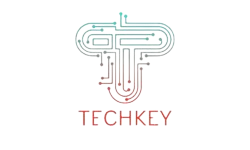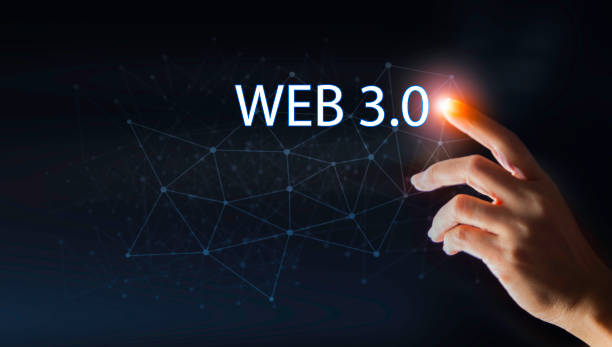Top Trends in Backend Development for 2025

Recent reports show that the software development industry will grow faster than ever before due to new technological developments. Also, by 2025, this rapid growth is expected to double. The foundation of software development is backend development, which acts as a conduit between the database and the front end. That is why backend developers today have numerous options for building, deploying, and maintaining server-side applications.
In this blog, we will go into more detail about the top ten backend development trends of 2025. Additionally, we will go into backend development, the tasks and duties of backend developers, and the benefits of using backend frameworks. Now, without further ado, let’s jump quickly into the top ten backend growth trends for 2024 and beyond.
What is backend development?
Various web development activities that are performed on the backend of an application are called backend development. It covers various activities, including server-side development, database management, application integration, building libraries and writing APIs with a focus on application architecture. Therefore, choosing the right background development technology is very important. It acts as a synchronized process with the front end to send and receive data to display the data. Backend developers use tools like Oracle, MySQL, and SQL to read, create, update, and delete data that is sent back to the front of the application.
Who are backend developers?
Now you have information about backend development. It’s time to understand who a backend developer is and their roles and responsibilities. In general, every backend developer’s main focus will be on writing code that effectively communicates between the database user and the website.
According to the US Bureau of Labor Statistics, the demand for backend developers is expected to grow 13% by 2028. It is mainly due to todays increasing popularity of mobile devices and the e-commerce industry. Some of the most important skills a backend developer needs include backend programming languages, the knowledge of backend frameworks, version control system, driver control troubleshooting and strong communication skills.
What are the major benefits of using backend frameworks?
The main purpose of using a backend framework is to simplify the development process. Its made possible by mainly using tools and libraries that can be used to develop web applications. Here are some of the advantages of using a backend framework:
- Using a back-end framework provides enhanced security measures that include encryption, data authentication and verification.
- Also, having the right framework helps developers complete their work faster. Moreover, using these frameworks also helps with automation, which saves time so that developers can focus on other complex tasks.
- In addition, making use of a backend development framework saves more time, which greatly reduces the overall development costs.
- Making use of the backend framework can also help developers to quickly scale applications based on the different business needs.
Today backend developers are now in great demand. However, the needs for specific technologies, tools, frameworks, and languages are changing with the current technological advancements’s change that happening at a rapid pace. In the next section, we will discuss the best behind-the-scenes development trends in 2025 in detail.
The Top 10 Backend Development Trends 2025
In today’s technological landscape, several trending backend technologies are shaping the industry. These include backend as a service (BaaS), serverless computing, Spring Boot, and Go. Let’s explore these backend development trends and their impact on IIoT platform development and modern software development services for businesses in 2025.
1. Backend as Service (BaaS)
Backend as a Service(BaaS) is a cloud-based model in which technical teams outsource the application’s backend services to an external service provider. BaaS vendors offer services such as pre-written software for server-side tasks such as database management, server authentication, push notification, and much more.
Developers manage the backend as a service model with SDKs and APIs. This service enables in-house developers to focus on writing code and maintaining the front end, resulting in faster application development. AWS, Microsoft Azure, and Firebase are some of the most popular BaaS service providers.
2. Django
Python created this high-level framework that adheres to the model-view-template architectural pattern. It allows you to keep your code logically organized into layers. Django handles the model’s controller aspects, leaving you with only the data view and presentation templates to specify. According to recent studies done by leading industry analysts reports that software development services widely use Django in the UK due to its scalability, rapid development capabilities, and robust security features.
Moreover, This framework has some key features, such as code reuse, and rapid development, and requires little effort. Spotify, Instagram, Prezi, Mozilla, Pinterest, and Disqus are among the top companies that use Django. Some of the key features of the Django framework include:
- Django offers enhanced security features, allowing users to manage their passwords and accounts through its user authentication system.
- The use of Django promotes rapid development; executing a project typically takes longer, but with Django, it happens faster.
- Django enhances scalability by allowing for easy transitions from small to large-scale projects.
- This framework has an extensive base of users, and many talented individuals are constantly working to improve the software.
3. Serverless Computing
It’s a type of cloud computing that involves a cloud provider allocating resources based on demand and maintaining servers for clients. Developers don’t have to worry about idle time, server availability, or infrastructure management because the application is cloud native. AWS Lambda, Google Cloud Functions, IBM OpenWhisk, and Microsoft Azure Functions are a few popular instances of serverless computing.
The following are some of the key benefits of serverless computing:
- The scalability of serverless architectures is high.
- It encourages rapid updates and deployments.
- Developers are paid according to a pay-as-you-go schedule.
- Server management is not necessary/required.
4. Laravel
Taylor Otwell developed this free and open-source framework called Laravel to encourage the development of web applications. Laravel’s elegant and straightforward syntax gives code incredible functionality. One of the best frameworks for backend web development, experts believe it is perfect for backend development. PedidosYa, Ratio Razorpay, Pfizer, the BBC, Lenovo, 9GAG, Crowdcube, and many other leading companies use it. The following are some of the main benefits of using Laravel:
- Because of the pre-installed libraries that can generate and maintain sophisticated features, it provides more flexibility.
- Compared to the majority of other frameworks, Laravel can process requests substantially more quickly. Its distinctive queuing system encourages high performance by enabling you to put off some website tasks.
- Laravel-based websites are simple to administer and maintain.
- This feature guarantees that the solution operates without any issues and enables users to test the performance of the application.
5. Headless CMS
A headless content management system is an extremely powerful and adaptable way to manage content. It separates the content body and the presentation layer. This system enables you to manage content and deliver it to the frontend environment. This makes it easier for developers to manage the technical stack. This setup separates the application’s frontend and back end, making it easier to mitigate targeted attacks. Strapi, Netlify CMS, Sanity, and WordPress are some popular examples of headless CMS.
6. Spring Boot
Spring Boot is an open-source Java framework that allows you to build production-ready standalone applications. It allows developers to get started quickly without spending time on configuration and preparation. Top Spring Boot users include Trivago, Google, Microsoft, Accenture, Intuit, Amazon, iFood and Udemy. Some of the primary benefits of using Spring Boot are:
- Spring Boot is extremely adaptable and scalable.
- Using Spring Boot saves a lot of memory.
- Spring Boot does not require any XML configuration or WAR files.
- It is capable of powerful batch processing and managing REST endpoints.
7. Static Website Generators
It is a tool for creating a full static HTML website from raw data. It automates the process of coding HTML pages and making them ready to serve. These HTML pages are pre-built and load quickly in users’ browsers. For backend developers, the main advantage is that the website does not require server-side processes to function. Aside from that, the website built with static generators is extremely customizable. Developers use static generators such as Hugo, Eleventy, Pelican, and Gatsby.
8. Elixir
Elixir is a programming language with a simple syntax that is used to create and maintain applications. It was created in 2011 and is currently one of the most popular programming languages, according to Stack Overflow. It is used by well-known companies such as PepsiCo, Discord, and Mozilla.
9. Go
Google created the object-oriented programming language Go, also known as GoLang, in 2009. It is actually a programming language used for general purposes. Uber, Dropbox, Twitch, Alibaba, American Express, and Google all use Go in their tech stacks.
Some of the key features of the Go language are:
- Delivers powerful performance.
- Code was simplified.
- Suitable for multi-core processors.
- Quick garbage collection,
- Simple to learn and understand, and easy to maintain.
- Enhances scalability
10. Ruby on Rails
Ruby on Rails is a framework for developing server-side web applications using the Ruby programming language. It supports MVC architecture and employs software engineering paradigms like:
- Don’t repeat yourself (DRY) is a software development principle that reduces code repetition.
- CoC (Convention over Configuration): It offers a wide range of options for the best way to do things in web applications.
Some of the main features of Ruby on Rails include:
- RoR is quick and saves time by simplifying complex tasks, allowing you to achieve your goals more quickly. It increases productivity and is simple to maintain.
- It is very safe and secure. It also supports behavior-driven and test-driven development.
- RoR scalability enables developers to handle larger responsibilities. The project can be easily scaled up without sacrificing quality.
In conclusion
Top tech companies are paying incredibly high salaries to hire backend developers, who are in high demand right now. Because there are so many backend development technologies available today, picking the best one is essential. The appropriate backend technology guarantees enhanced scalability and prompt customer response. These are the top ten backend tools and technologies that are popular right now and will be popular in 2025. Make sure to keep up with all of these backend development trends if you want to advance in the field and provide exceptional backend software development services for UK companies.
Author Bio
Vishnu Narayan works as a content writer for ThinkPalm Technologies. He is an enthusiastic writer, a tech enthusiast, and an avid reader who tries to travel the world with a heart that yearns to see more sunsets than Netflix!









